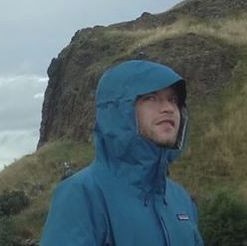Newtonian noise studies for future generation gravitational-wave detectors [slides]
David Caro building, Level 6 Opat room
More information
-
 Dr Pat Meyers, Postdoctoral Fellow
Dr Pat Meyers, Postdoctoral Fellow
University of Melbourne
Email: pat.meyers[at]unimelb.edu.au
Abstract
Second generation gravitational wave (GW) detectors like Advanced LIGO and Advanced Virgo have ushered in the era of gravitational wave astronomy and multi-messenger astronomy with several detections of compact binary mergers. One of the next frontiers of GW astrophysics is to detect and to characterize the stochastic gravitational wave background (SGWB). A measurement of an astrophysical SGWB (like that caused by many unresolved compact binary mergers) could happen in the next few years with second generation detectors, but the ability to detect relic GWs, like those produced in many models of the early Universe, with third generation ground-based interferometric detectors will require significant improvements in strain sensitivity at frequencies below ~10 Hz. In this talk, I will broadly discuss the challenges in improving sensitivity at low frequencies before focusing on noise caused by local gravitational perturbations, known as Newtonian noise. Newtonian noise can be caused by density fluctuations in the Earth (seismic waves) and the atmosphere (density and temperature fluctuations) and current estimates suggest that it will likely be a limiting noise source for future GW detectors at low frequencies. I will discuss a 3-dimensional seismometer array at the former Homestake gold mine in Lead, SD, whose primary goal is to estimate and better understand Newtonian noise, and to develop techniques for mitigating it in future GW detectors. Along the way, I'll also introduce some basic seismology, and highlight how some of our results are useful to the broader seismological community.